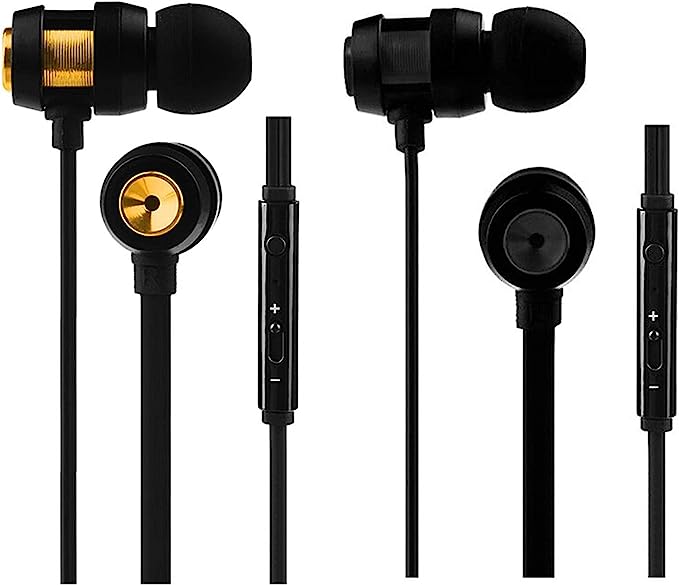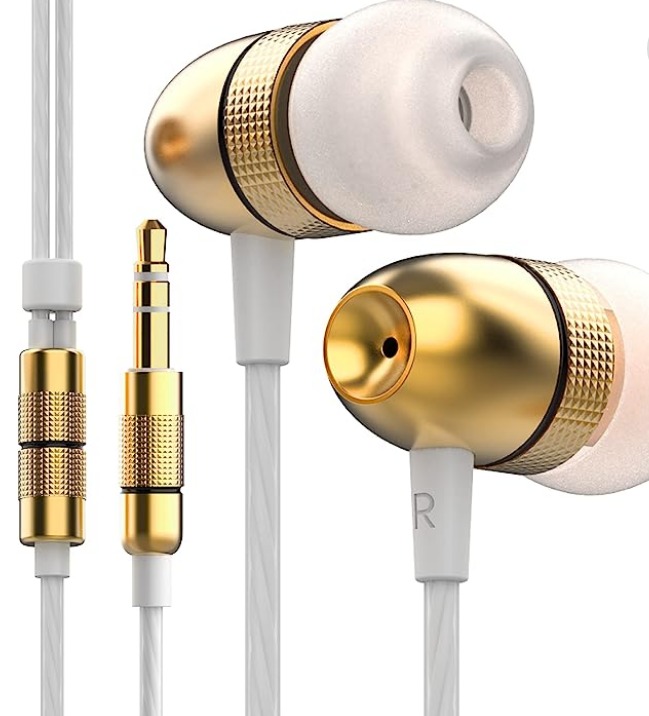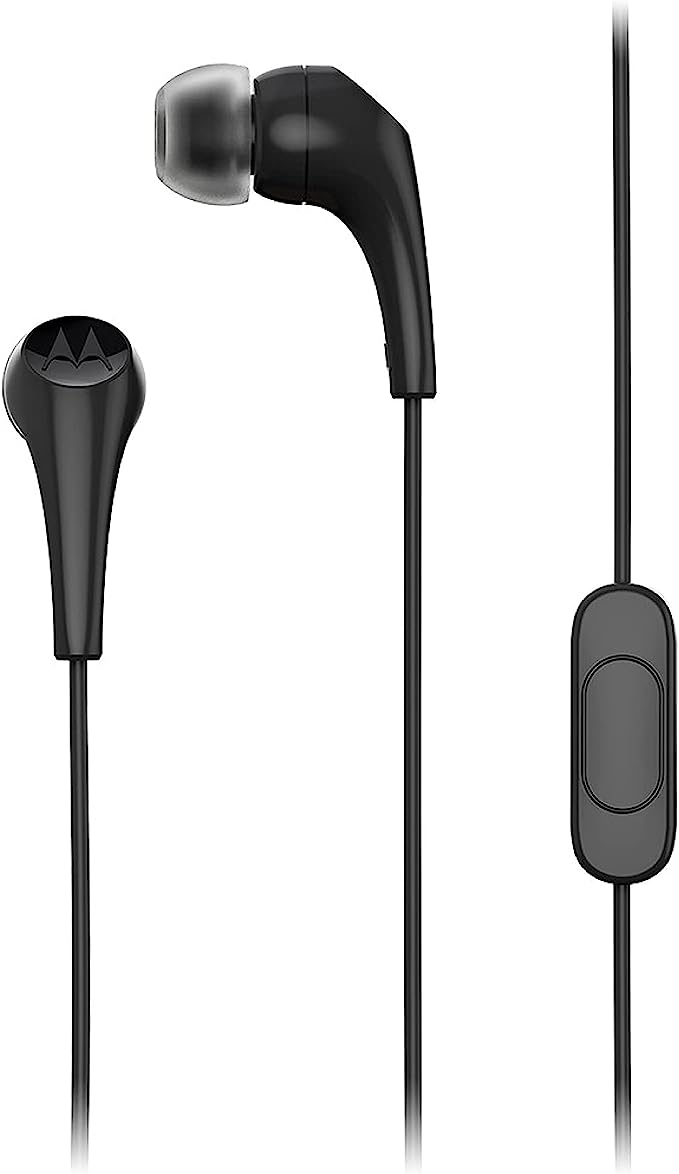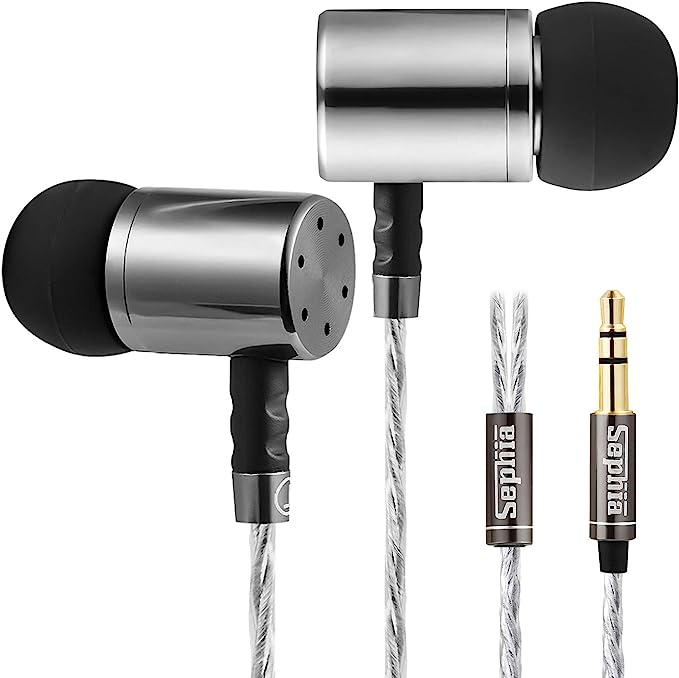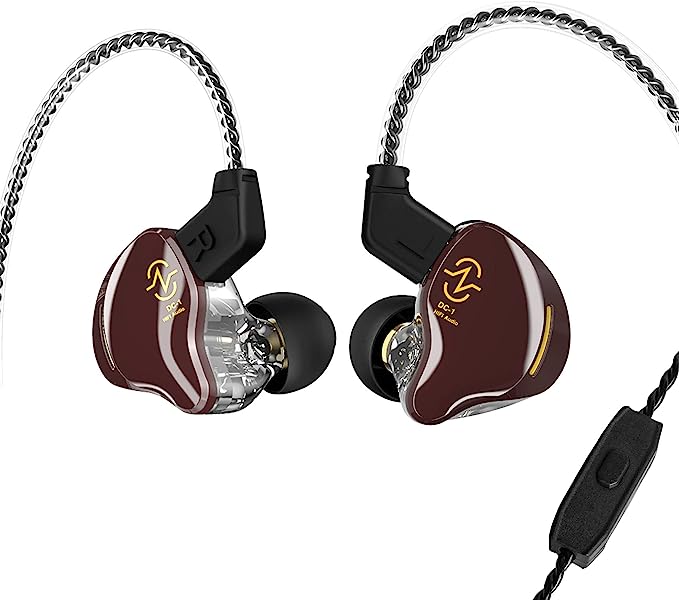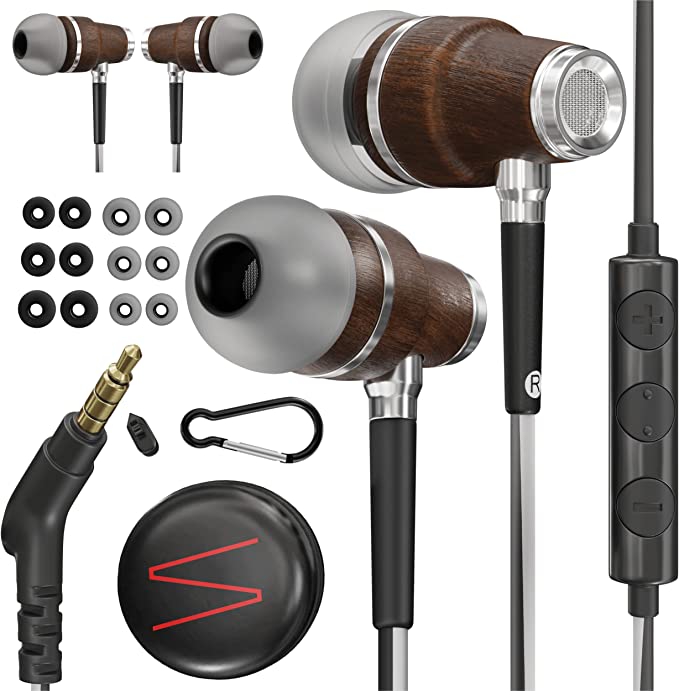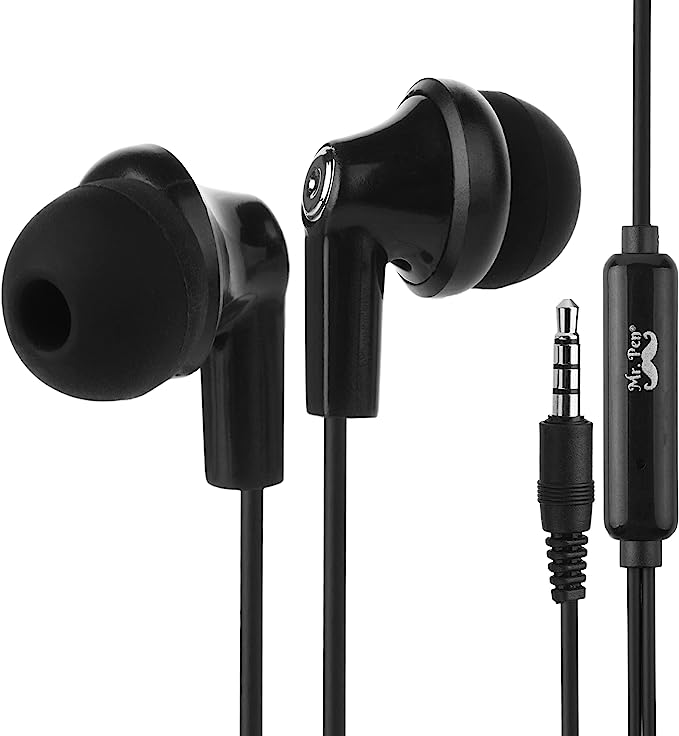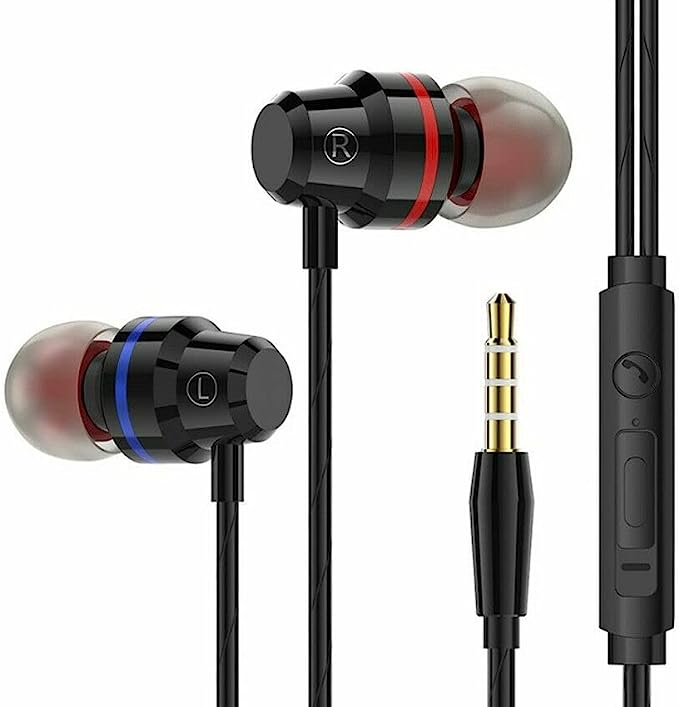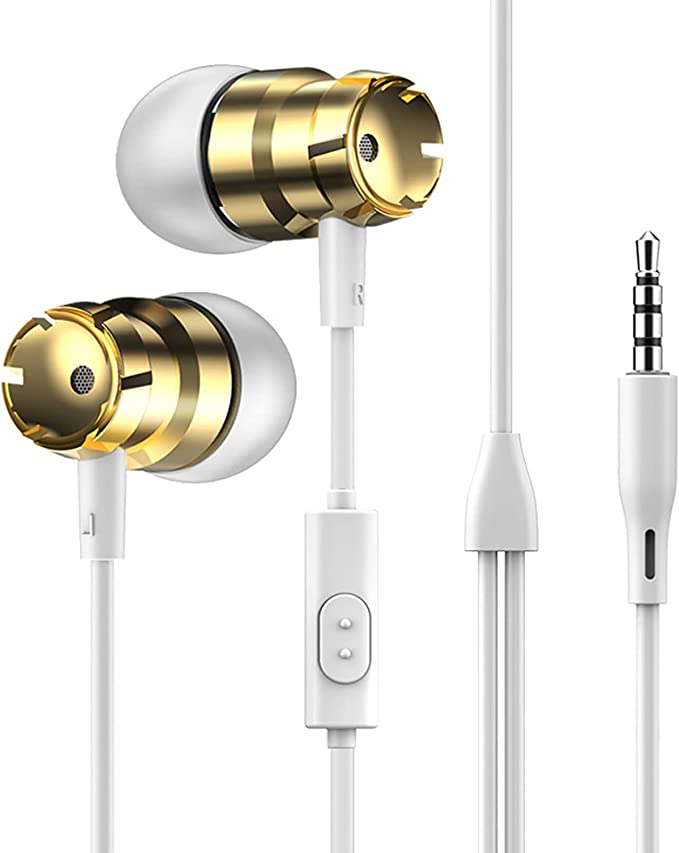FAAEAL Iris 2.0 Wired Headphones: The Science of Sound in an Affordable Package
Update on May 30, 2025, 12:52 p.m.
In an era dominated by the ethereal convenience of wireless audio, there’s a certain grounded charm, a reassuring tangibility, to a good old pair of wired earbuds. They whisper of a direct connection, an uncompressed signal, and often, a surprising fidelity for their humble asking price. Today, we embark on a sonic exploration, not of a flagship marvel 끝판왕, but of a contender from the more accessible end of the spectrum: the FAAEAL Iris 2.0 Wired Headphones. This seemingly simple device, often available for less than the cost of a couple of fancy coffees, serves as a fascinating case study. How does such an unassuming piece of audio gear attempt to deliver a compelling listening experience? More importantly, what can its design and a peek “under the hood” teach us about the fundamental science of sound reproduction that delights our ears? Prepare to be surprised; there’s more to this than meets the eye – or rather, the ear.

The Engine of Sound: A Deep Dive into the Dynamic Driver
At the very core of almost every headphone or speaker that has ever made you tap your foot or lose yourself in a melody lies a marvel of electromechanical engineering: the driver. For the FAAEAL Iris 2.0, like countless audio transducers before it, this heart is a dynamic driver. Let’s peel back the layers of this ubiquitous, yet often underappreciated, technology.
A Blast from the Past, A Beat for Today: The Legacy of the Dynamic Driver
Imagine, if you will, the roaring 1920s. While flapper dresses and jazz were setting the cultural rhythm, two engineers at General Electric, Chester W. Rice and Edward W. Kellogg, were busy patenting a device that would fundamentally shape how we experience sound: the moving-coil loudspeaker, the direct ancestor of the dynamic driver in your earbuds. The principle, elegant in its simplicity, has remained largely unchanged for a century. It involves a diaphragm (a thin membrane) attached to a coil of wire (the voice coil) suspended within a magnetic field. When an electrical audio signal passes through the coil, it becomes an electromagnet that interacts with the permanent magnet, causing the coil and the attached diaphragm to vibrate rapidly. These vibrations push and pull the air, creating sound waves – the very essence of music and voice.
The FAAEAL Iris 2.0 houses a 15.4mm dynamic driver. In the world of tiny earbuds, 15.4 millimeters is a relatively generous diameter. Why does this size matter? Generally, a larger diaphragm can move a greater volume of air. Think of the difference between a small hand drum and a large bass drum; the latter, with its larger surface, produces deeper, more resonant tones. Similarly, a larger driver in an earbud has the potential to reproduce lower frequencies (the bass and sub-bass that provide warmth and impact) with more authority and can contribute to a more open, spacious soundstage – that feeling of musicక్క happening around you, rather than just inside your head.

The Diaphragm’s Delicate Flutter: PET’s Role in Clarity
The diaphragm is the part of the driver that actually “sings.” Its job is to move with incredible precision, faithfully converting the voice coil’s movements into sound waves. The ideal diaphragm material is a paradox: it needs to be incredibly lightweight to respond instantaneously to the nuances of the audio signal (especially high frequencies, which vibrate very quickly), yet rigid enough not to flex or distort undesirably during these rapid excursions, which would color the sound. It also needs good internal damping – the ability to stop vibrating quickly once the signal stops, preventing a “muddy” or “smeared” sound.
The Iris 2.0 employs a PET diaphragm. PET, or Polyethylene Terephthalate, is a type of polyester plastic you might recognize by trade names like Mylar®. Its journey into audio is quite distinguished; long before it formed the heart of earbuds, PET films were the backbone of magnetic recording tapes and the dielectric in capacitors. In acoustics, PET strikes an excellent balance. It’s light, strong, relatively inexpensive to manufacture, and can be formed into the precise, often subtly domed, shapes required for diaphragms. This material choice in the Iris 2.0 is a pragmatic one, aiming to deliver that “dynamic crystal clear sound” touted in its description by allowing the diaphragm to respond nimbly and accurately, especially through the midrange and treble frequencies where vocal and instrumental clarity reside.
The Unseen Force: The Might of Rubidium Iron Boron (RbFeB) Magnets
If the diaphragm is the voice, and the coil is the muscle, then the magnet is the unwavering will that directs the entire operation. The strength and stability of the magnetic field are crucial for the driver’s performance. A stronger magnetic field allows for greater control over the voice coil’s movement, leading to more precise sound reproduction, better transient response (the ability to handle sudden sharp sounds like drum hits), and higher efficiency.
The Iris 2.0 specs list “Rubidium Iron Boron / (RbFeB)” as its magnet material. This is a specific formulation of a Neodymium magnet (NdFeB), which belongs to the family of rare-earth magnets. The discovery of NdFeB magnets in the early 1980s by two independent research groups (Dr. Masato Sagawa at Sumitomo Special Metals in Japan and Dr. John Croat at General Motors in the USA) was a watershed moment for countless industries, audio included. These magnets boast an incredibly high magnetic energy product for their size and weight compared to older ferrite or alnico magnets. This “supermagnet” status means that even a small NdFeB magnet can create a very powerful and concentrated magnetic flux.
For an earbud like the Iris 2.0, using such a magnet translates to several advantages. It allows the driver to be more sensitive – the spec sheet claims $106 \text{ dB}$ (decibels of sound pressure level per 1 milliwatt of power). This relatively high sensitivity, paired with a common impedance of $32 \Omega$ (Ohms – a measure of electrical resistance), means these earbuds can be easily driven to satisfying volume levels by virtually any portable device, like a smartphone or laptop, without needing a dedicated headphone amplifier. The strong magnetic field also helps in accurately controlling the diaphragm’s movement across the specified frequency response range of $20 \text{ Hz}$ to $20 \text{ kHz}$ (roughly the span of human hearing), aiming for a faithful reproduction of the original audio signal.

Whispers in the Coil: The Significance of Quality Copper (Decoding “Daikoku”)
The voice coil is where the electrical magic transforms into physical motion. It’s typically made of very fine, lightweight copper or copper-clad aluminum wire. The quality of this wire and how it’s wound are critical. The Iris 2.0’s product description mentions “Coil: Daikoku.” While “Daikoku” isn’t a universally known coil technology in the same way Litz wire is a construction method, it likely refers to Daikoku Electric Wire, a Japanese company known for producing high-quality magnet wires, including those used in audio applications.
Assuming the use of quality copper wire, whether from Daikoku or another reputable source, is vital. Copper is an excellent electrical conductor, second only to silver (which is far more expensive). A well-made coil with pure copper will ensure that the audio signal is transmitted to it with minimal loss or distortion, allowing for the precise electromagnetic interactions needed to drive the diaphragm accurately. The goal is for the coil to be as light as possible to aid fast response, yet able to handle the required power without overheating or deforming.
The Sonic Lifeline: Cables, Connectors, and Signal Integrity
The journey of sound doesn’t end at the driver; the path the electrical signal takes to get there is equally important. The cable and its connectors are the unsung heroes that bridge your audio source to the tiny engines in your ears. In budget-friendly earbuds, cable quality is often an area of compromise, but the FAAEAL Iris 2.0 specifications hint at some thoughtful choices.
The Purity Quest: Oxygen-Free Copper (OFC) and Its Sonic Promise
The product description proudly states “Core: N Litz OFC.” Let’s first tackle OFC, or Oxygen-Free Copper. Pure copper is a fantastic conductor, but even tiny amounts of impurities, including oxygen, can affect its performance. Oxygen within the copper lattice can form copper oxides, which are less conductive than pure copper. These oxides, especially at the crystal grain boundaries within the wire, can act as tiny barriers or “diodes,” potentially causing minute signal reflections or non-linearities, which, in theory, could subtly degrade the audio signal, particularly its finer details or high-frequency components.
The OFC manufacturing process aims to reduce the oxygen content in the copper to typically less than 0.001% (or 10 parts per million). The result is copper with slightly higher conductivity and, perhaps more importantly for a flexible cable, improved ductility and resistance to embrittlement and corrosion over time. While the audible benefits of OFC in short headphone cables are a subject of ongoing debate among audiophiles (with some aeffects more pronounced in longer, higher-current speaker cables), the use of OFC in the Iris 2.0 suggests an attention to material quality that aims to preserve signal integrity as much as possible from the source to the driver. It’s a small detail, but in the pursuit of clear sound, many such small details can add up. The “N” in “N Litz OFC” is less clear; it could be a manufacturer-specific grade or simply part of the product code, but the OFC aspect itself is a recognized mark of quality.

Taming the High Frequencies: The Ingenuity of Litz Wire
The “Litz” part of “N Litz OFC” refers to Litz wire construction, a rather clever piece of electrical engineering that dates back to the early 20th century, primarily developed for radio frequency applications. The name comes from the German word “Litzendraht,” meaning braided or stranded wire.
Here’s the challenge Litz wire addresses: when an alternating current (like an audio signal) flows through a solid conductor, it doesn’t distribute itself evenly across the wire’s cross-section. At higher frequencies, the current tends to concentrate near the surface of the conductor. This phenomenon is known as the “skin effect.” A related issue, the “proximity effect,” occurs when multiple conductors are close together, causing the current distribution in each to be further skewed. Both effects increase the wire’s effective resistance at higher frequencies, which can lead to attenuation (loss) of high-frequency signals and phase shifts, potentially dulling the sound or smearing transient details.
Litz wire combats these effects by using multiple thin strands of wire, each individually insulated with a coating like enamel. These insulated strands are then twisted or braided together in a carefully designed pattern. This construction forces the current to divide itself more equally among the strands, and because each strand is thin (often comparable to or smaller than the skin depth at the frequencies of interest), the skin effect within each individual strand is minimized. The overall result is a cable that maintains a lower and more consistent AC resistance across a wider frequency range, particularly in the upper octaves. For audio, this can translate to improved clarity, better high-frequency extension, and a more transparent sound. The inclusion of Litz construction in a budget earbud like the Iris 2.0 is a noteworthy feature, suggesting an effort to preserve the delicate high-frequency information that contributes to a sense of airiness and detail in music.
The Evergreen Connector: The 3.5mm Jack’s Enduring Legacy
All this carefully managed signal culminates at the humble 3.5mm plug, a connector with a surprisingly rich history. Its larger ancestor, the 1/4-inch (6.35mm) phone connector, dates back to the late 19th century, originally used in telephone switchboards. The 3.5mm miniature version, often called a mini-jack or an 1/8-inch plug, became ubiquitous with the rise of portable audio players like the Sony Walkman.
Typically, for stereo headphones like the Iris 2.0 (which is the “Without Mic Version”), the 3.5mm plug will be a TRS connector: Tip, Ring, and Sleeve. The Tip carries the left channel audio signal, the Ring carries the right channel, and the Sleeve is the common ground. (Versions with microphones, TRRS, add an extra Ring for the mic signal). The beauty of the 3.5mm jack lies in its simplicity, its robustness (for the most part), and its near-universal compatibility across a vast range of audio devices – from smartphones and laptops to DAPs (Digital Audio Players) and desktop amplifiers.
In an age of disappearing headphone jacks on many smartphones, the FAAEAL Iris 2.0’s reliance on this wired standard is a deliberate choice. It ensures broad compatibility without fussing with Bluetooth pairing, codecs, or battery life. It also offers a direct, analog signal path from the device’s digital-to-analog converter (DAC) and amplifier to the earbuds, which many purists argue offers the potential for higher fidelity by avoiding the compression often associated with wireless transmission. The product page mentions a “4 core OFC braided cable” and a “90 degree jack” for the Iris 2.0. A 4-core construction typically means separate ground wires for the left and right channels (in addition to their signal wires), which can help reduce crosstalk and improve stereo separation. The braided nature of the cable adds to its durability and tangle resistance, while a 90-degree (right-angle) jack can be more ergonomic and less prone to stress when used with devices in a pocket, though some user reviews noted this particular one felt a bit large.
The Shape of Sound, The Feel of Music: Ergonomics, Acoustics, and Listener Experience
Beyond the intricate dance of electrons and magnetic fields, the way an earbud interacts physically and acoustically with our ears profoundly shapes our listening experience. The FAAEAL Iris 2.0 adheres to a classic “flat-head” or traditional earbud design, a style that has its own set of ergonomic and acoustic characteristics, and a loyal following.
The Classic Touch: The Ergonomics and Acoustics of “Flat-Head” Earbuds
Before the deep-insertion in-ear monitors (IEMs) became commonplace, the flat-head earbud reigned supreme. Think of the iconic white earbuds bundled with early iPods – that’s the lineage we’re talking about. Unlike IEMs that seal the ear canal with silicone or foam tips, these classic earbuds rest gently in the concha, the outer bowl of the ear. For many users, this non-intrusive fit is a significant comfort advantage, especially during long listening sessions. The product description for the Iris 2.0 highlights this: “you won’t be painful to your ears after a long-time wearing. They are lightweight and won’t add any burden to your ears when wearing them.” User reviews frequently echo this sentiment, with phrases like “very comfortable to wear for long periods.”
Acoustically, this open design has distinct trade-offs. It typically provides minimal noise isolation from the surrounding environment. While this might be a disadvantage in noisy settings, it can be a safety benefit when you need to be aware of your surroundings, like when walking outdoors. Sonically, this openness can contribute to a more expansive and “airy” soundstage. Because the ear isn’t completely sealed, sound waves can interact more naturally with the outer ear’s structures (the pinna), which play a role in our perception of sound direction and space. This can sometimes make music feel less “in your head” and more like it’s emanating from a wider area. The lightweight build of the Iris 2.0 further enhances this comfort, making it easy to forget you’re even wearing them.
Decoding the Spec Sheet: Frequency Response, Impedance, and Sensitivity in Concert
We’ve touched on some of these, but let’s consolidate how the key electrical and acoustical specifications of the Iris 2.0— $20 \text{ Hz}$ to $20 \text{ kHz}$ frequency response, $32 \Omega$ impedance, and $106 \text{ dB}$ sensitivity—come together.
- Frequency Response ($20 \text{ Hz} - 20 \text{ kHz}$): This range is often cited as the general limits of human hearing. A device claiming this range suggests it can reproduce frequencies from the deepest rumbles of sub-bass to the highest shimmer of cymbals. However, a flat line graph across this range is rare and not always desirable; most headphones have a “sound signature” or intentional variations in this response to create a particular tonal balance. The Iris 2.0’s claim covers the bases, but the quality and balance of that response are what truly matter.
- Impedance ($32 \Omega$): This is a measure of the earbud’s opposition to the alternating current from the audio source. A lower impedance, like $32 \Omega$, generally means the earbuds are easier for low-power devices (like phones) to drive. Higher impedance headphones (e.g., $250 \Omega$ or $600 \Omega$) often require dedicated amplifiers to perform optimally. The Iris 2.0’s impedance makes it very portable-friendly.
- Sensitivity ($106 \text{ dB}$ SPL/mW): This indicates how loud the earbuds will play for a given amount of input power (typically 1 milliwatt). $106 \text{ dB}$ is quite efficient. This means you won’t have to crank up the volume on your device very high to achieve a normal listening level.
Together, the $32 \Omega$ impedance and $106 \text{ dB}$ sensitivity of the Iris 2.0 paint a picture of an earbud that is very easy to drive and should get plenty loud from almost any source. This is ideal for casual listening with everyday devices. The manufacturer describes the resulting sound as “warm and clean vocal sound, balance, good bass.” The 15.4mm driver certainly has the potential for “good bass,” and the PET diaphragm and OFC Litz cable aim for that “clean vocal sound.” “Warmth” often implies a slight emphasis in the lower midrange or upper bass, which can make music sound fuller and more inviting, though too much can lead to muddiness. “Balance” suggests an attempt to keep lows, mids, and highs in reasonable proportion.
Echoes from Users: Weaving in Real-World Perspectives
While technical specifications provide a blueprint, the true test of an audio product is in the listening. The user reviews provided for the FAAEAL Iris 2.0 offer valuable, albeit subjective, insights that often correlate with the design choices.
Many users praise the comfort, aligning with the ergonomic goals of the classic flat-head design and lightweight construction. The “surprising amount of bass” mentioned by several reviewers supports the idea that the 15.4mm dynamic driver is indeed capable of delivering a satisfying low-end response, especially when users, as one reviewer strongly suggested, “PLEASE USE THE FOAMS WITH THESE.” Foam covers, often included with this style of earbud, can create a slightly better seal against the ear, which significantly enhances bass perception and can also tame any potential treble sharpness.
The description of the sound as “clear and original” or “excellent bass response and no shrillness from the mids & highs” points to the technical aspirations of the PET diaphragm and OFC Litz cable bearing fruit for many listeners. However, sound perception is intensely personal. One user’s “warm and balanced” can be another’s “too muddy.” This discrepancy highlights that factors beyond the earbud itself – such as the audio source quality, the specific genre of music, individual ear anatomy, and even listener mood – can influence the experience. The cable, while praised for its braided quality by some, was found “too thick” or prone to “pulling” by another, and the “comically large” right-angle plug drew a comment. These critiques underscore that even thoughtful design elements can have subjective downsides. Reports of the jack wearing out after about a year of heavy use also point to the inevitable durability considerations in budget-oriented products.
Coda: The Art of Affordable Audio and the Joy of Informed Listening
The FAAEAL Iris 2.0 Wired Earbuds, when viewed through the lens of audio science and engineering, emerge as more than just another inexpensive accessory. They represent a distillation of decades of audio technology: the enduring principles of the dynamic driver, the subtle refinements in material science like PET diaphragms and OFC Litz cables, and the ergonomic wisdom of a classic design. All of this is orchestrated to deliver a sound experience that, for many, punches well above its modest price tag.
There’s an undeniable “alchemy” at play in creating such affordable audio. It involves leveraging mature, well-understood technologies where the research and development costs have long been amortized. It means making intelligent compromises – perhaps not the absolute cutting-edge materials in every single component, but good quality where it counts most for the sound. It relies on the economies of scale in manufacturing. The result, as seen with the Iris 2.0, can be a product that democratizes access to enjoyable sound quality.
Ultimately, understanding a bit of the science behind how these little marvels turn electrical signals into the music that moves us does more than satisfy curiosity. It empowers us as listeners. It allows us to look beyond marketing hype and appreciate the tangible engineering that contributes to our audio enjoyment. It helps us make more informed choices, whether we’re seeking a budget-friendly daily driver or a high-end audiophile treasure.
So, the next time you plug in a pair of earbuds, even ones as unassuming as the FAAEAL Iris 2.0, take a moment. Consider the journey of that sound: from the digital file to the DAC, through the cable’s copper veins, into the driver’s magnetic heart, vibrating a delicate diaphragm to finally grace your ears. It’s a small miracle of science and engineering, happening right there, bringing a world of music, podcasts, and connection to your personal soundscape. And that, regardless of the price tag, is something worth appreciating.
